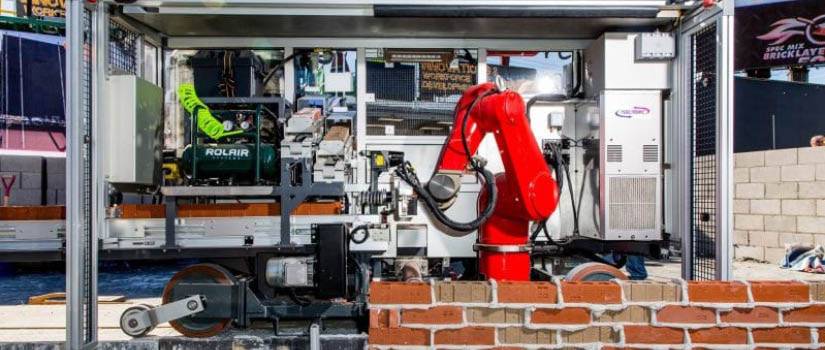Moore School marketing lecturer Doug Quackenbos was recently announced as the winner of the European Foundation for Management Development international case writing competition in the Bringing Technology to Market category for “SAM 100: Will Construction Robotics Disrupt the US Bricklaying Industry?”
Quackenbos won the award with his co-authors: Dominique Turpin, who is the Dentsu Chaired Professor of Marketing and the dean for external relations for the Institute for Management Development in Switzerland and Martin S. Roth, who is currently the president for the University of Charleston in West Virginia.
Read below as Quackenbos explains the case he and his colleagues presented for the
EFMD international case writing competition.
What does your case “SAM 100: Will Construction Robotics Disrupt the U.S. Bricklaying Industry” explore?
This case explores the marketing challenges that a robotics and automation technology
start-up faces in the construction industry. By applying Rogers’ Diffusion of Innovations’
analysis, students can work through the process of diagnosing what might be impeding
sales of the SAM (Semi-Automated Mason) 100 model and then identify which market segments,
targets and positioning strategies will help accelerate the adoption of this new innovation
in order for it to progress through to a robust product lifecycle. The steps for this
analysis include: 1) Robotics and the fear of job loss 2) Diffusion of innovations
3) Branding and naming 4) Business-to-business customer value and benefits 5) Commercialization
What were your findings in your case study?
As is common when commercializing robotic equipment, case protagonist for Construction
Robotics’ Rafael Astacio’s challenge is one of bringing a capital-intensive, technically
complex and revolutionary product to a traditional, labor-intensive market. In order
to be successful, he must “create the market,” convincing the various stakeholders —
owners and masons — that the benefits outweigh the costs of change.
What are the bigger picture takeaways from your case study?
Once stymied in a preliminary analysis, including the issue of the machine’s anthropomorphic
name (“SAM”), students must focus on a complex, multivariable diagnosis. This analysis
leads to the understanding that while the name may not be helping, there are many
other more important reasons for SAM100’s less-than-desired commercial performance.
How does it feel to win the EFMD case writing competition?
Robotic technology diffusion represents new and complex challenges for marketers,
especially in traditional and conservative industries such as construction, agriculture
and health care. It is a rewarding endeavor to inspire students to contemplate how
to overcome the underlying barriers to robotic technology diffusion. They also have
to balance legitimate concerns related to the greatest good for society with the deserved
benefit expectations of the entrepreneurial companies brave enough to take on such
initiatives. I’m honored to be recognized for this team effort.
For your case study, what are some examples of a robotics and automation technology start-up in the construction industry? (Existing companies that can be used as an example, if any?)
While for decades, robotics have been utilized in the manufacturing and automotive industries — where the work comes to the stationary robot — robots are a very recent arrival to the world of construction, where tasks are much more varied and conditions much more unpredictable. They also represent a capital-intensive investment for the adopters, making their short-term return on investment a more complicated task as well. These factors, combined with the more traditional and conservative user base, make the sales and marketing process much more complex.
Nevertheless, in addition to the Construction Robotics company, which created the SAM100 and highly successful MULE (Material Unit Lift Enhancer),
the construction tools behemoth, Hilti, just announced the launch of their drilling
robot, JAIBOT, “a semi-automated construction robot designed for mechanical, electrical, plumbing
and interior finishing installation projects.”
Anything else about your case study or winning the “Bringing Technology to Market” category for the EFMD competition?
EFMD is a global, non-profit, membership-driven organization dedicated to management development. It is recognized globally as an accreditation body for business schools, business school programs and corporate universities. The organization is based in Brussels, Belgium, with offices in Geneva, Hong Kong, Miami and Prague. The “Bringing Technology to Market” category is sponsored by EMST Berlin, Germany’s No. 1 business school.
